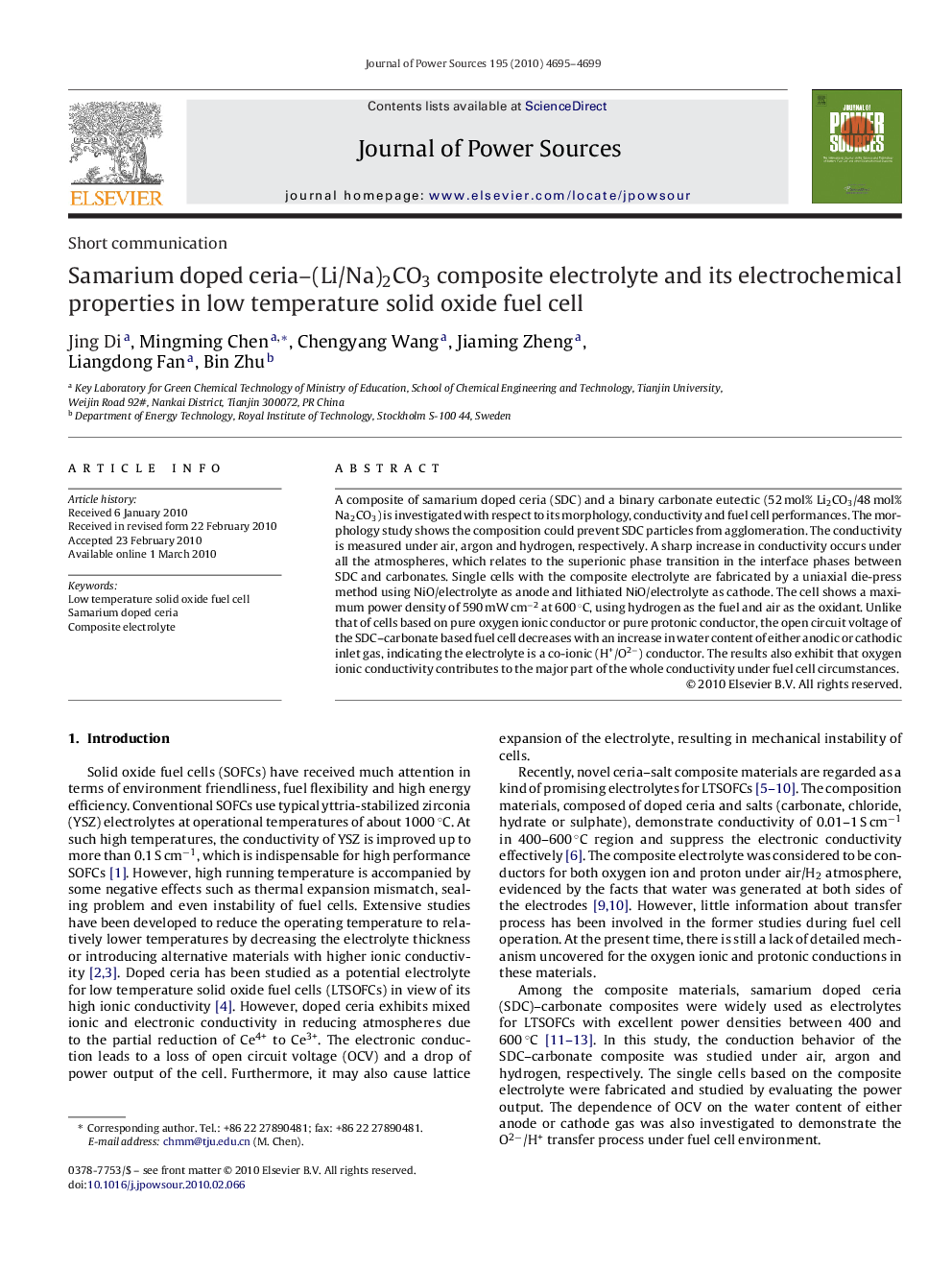| Article ID | Journal | Published Year | Pages | File Type |
|---|---|---|---|---|
| 1290082 | Journal of Power Sources | 2010 | 5 Pages |
A composite of samarium doped ceria (SDC) and a binary carbonate eutectic (52 mol% Li2CO3/48 mol% Na2CO3) is investigated with respect to its morphology, conductivity and fuel cell performances. The morphology study shows the composition could prevent SDC particles from agglomeration. The conductivity is measured under air, argon and hydrogen, respectively. A sharp increase in conductivity occurs under all the atmospheres, which relates to the superionic phase transition in the interface phases between SDC and carbonates. Single cells with the composite electrolyte are fabricated by a uniaxial die-press method using NiO/electrolyte as anode and lithiated NiO/electrolyte as cathode. The cell shows a maximum power density of 590 mW cm−2 at 600 °C, using hydrogen as the fuel and air as the oxidant. Unlike that of cells based on pure oxygen ionic conductor or pure protonic conductor, the open circuit voltage of the SDC–carbonate based fuel cell decreases with an increase in water content of either anodic or cathodic inlet gas, indicating the electrolyte is a co-ionic (H+/O2−) conductor. The results also exhibit that oxygen ionic conductivity contributes to the major part of the whole conductivity under fuel cell circumstances.
